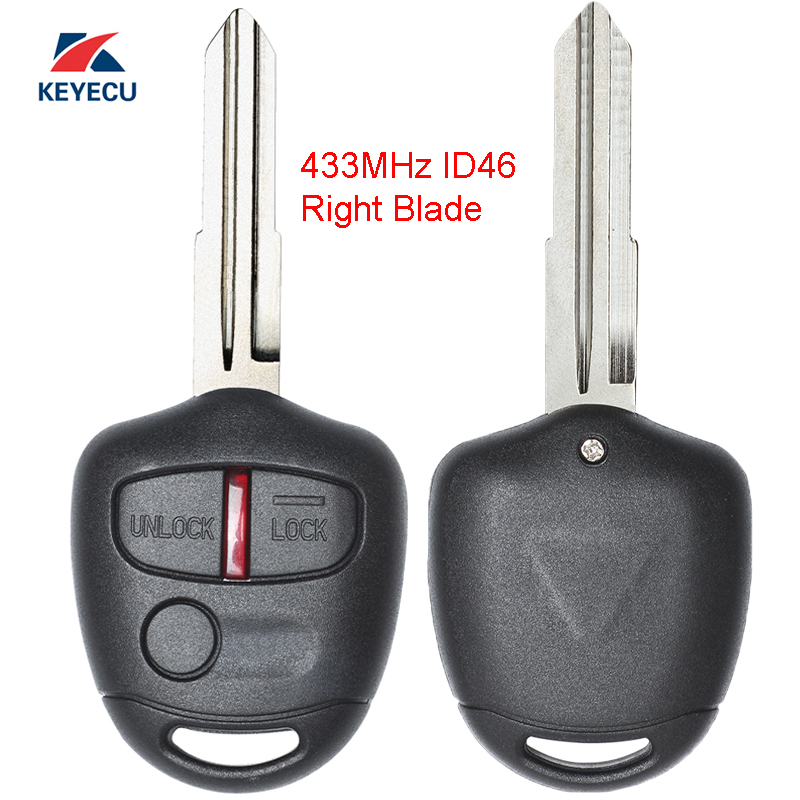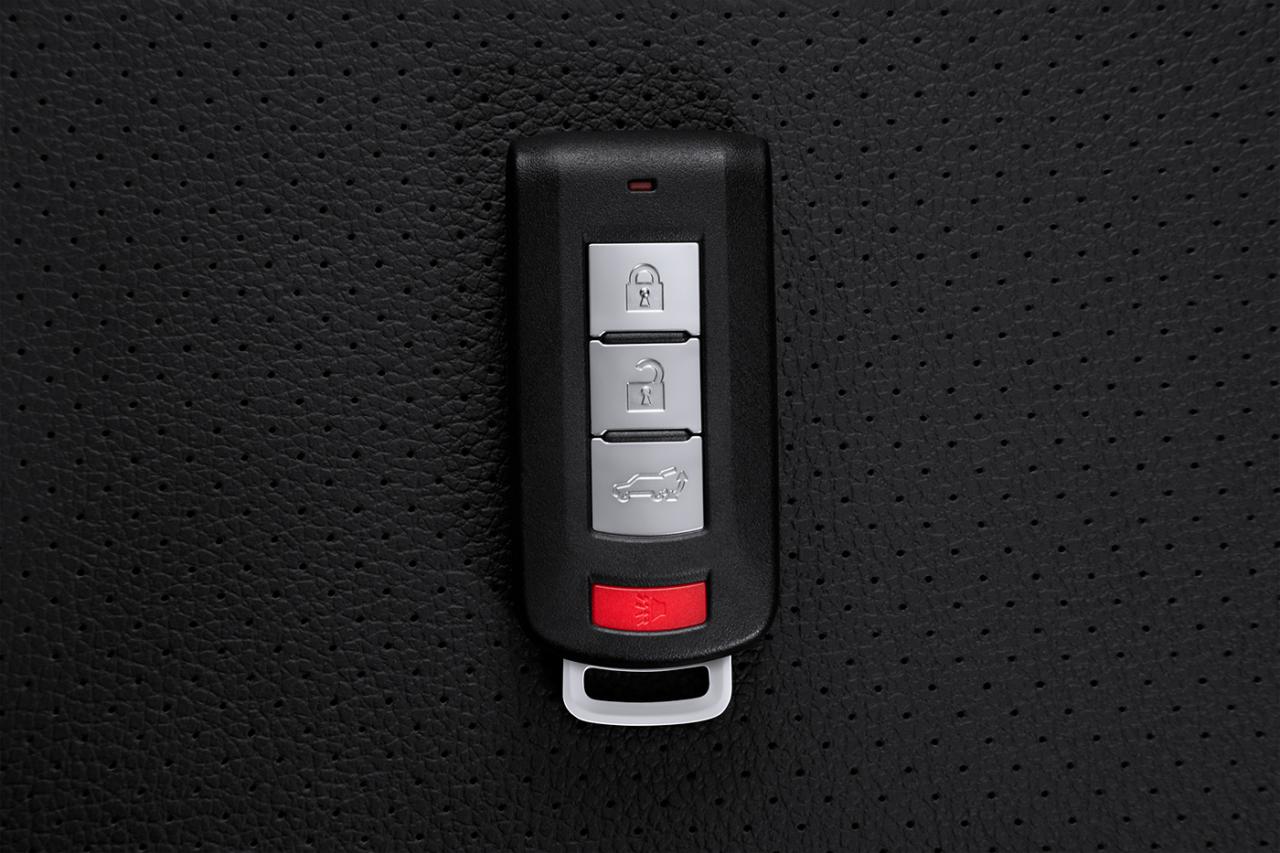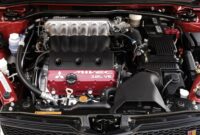How to fix a Mitsubishi key fob not working? It’s a question that plagues many Mitsubishi owners. Suddenly, your trusty key fob refuses to unlock your car, leaving you stranded and frustrated. Fear not! This guide will walk you through troubleshooting common issues, from simple battery replacements to more complex programming problems and even physical damage repair.
We’ll cover everything you need to get your key fob back in working order, saving you time, money, and a whole lot of stress.
From checking the battery and testing button functionality to reprogramming your key fob and assessing potential physical damage, we’ll provide clear, step-by-step instructions with helpful images. We’ll also delve into advanced troubleshooting techniques, including identifying internal component failures and determining whether the problem lies with the key fob itself or your car’s receiver. Whether you’re a seasoned DIY enthusiast or a complete novice, this comprehensive guide will equip you with the knowledge and confidence to tackle any key fob malfunction.
Troubleshooting Basic Issues: How To Fix A Mitsubishi Key Fob Not Working
A malfunctioning Mitsubishi key fob can be incredibly frustrating, leaving you stranded and scrambling for solutions. Before panicking and assuming the worst, let’s troubleshoot some common problems that can be easily fixed at home. Many issues stem from simple problems like a dead battery or a minor signal interference. This guide will walk you through the basic checks to get your key fob working again.
Several factors can cause your Mitsubishi key fob to stop functioning. The most frequent culprit is a depleted battery. Other potential issues include damaged buttons, weak signal strength, or even interference from other electronic devices. Let’s address these one by one.
Key Fob Battery Check and Replacement
A low or dead battery is the most common reason for a malfunctioning key fob. Mitsubishi key fobs typically use a small, button-cell battery, usually a CR2032. This is a 3-volt lithium battery, readily available at most electronics stores and online retailers. Replacing it is a straightforward process.
First, carefully examine your key fob. There’s usually a small seam or release button on the side or back. Gently pry open the fob using a small flat-head screwdriver or your fingernail. Be careful not to apply excessive force to avoid damaging the plastic casing.
Image Description: The image would show a close-up of a Mitsubishi key fob with the back cover slightly ajar, revealing the battery compartment. The CR2032 battery would be visible, nestled in its slot. Arrows would point to the release button or seam, and the battery itself. A small flathead screwdriver might be depicted gently prying open the key fob.
Once open, you’ll see the battery. Note its orientation before removing it. Gently remove the old battery. Insert the new CR2032 battery, ensuring it’s correctly aligned with the positive (+) side facing up. Close the key fob carefully, ensuring all parts are securely fastened.
Image Description: The image would depict the inside of the key fob, showing the battery compartment and the correct orientation of the new CR2032 battery. Arrows would clearly indicate the positive (+) side of the battery and its correct placement within the compartment.
Key Fob Button Functionality Test
After replacing the battery, it’s essential to test the buttons. A simple test involves trying each button individually while observing the key fob’s response. If your key fob has an indicator light (usually an LED), it should illuminate briefly when a button is pressed.
Try locking and unlocking your car using the key fob. If the car responds correctly, the buttons are functioning correctly. If not, there might be a problem with the internal circuitry of the key fob, requiring professional attention.
Key Fob Signal Strength and Range Check
A weak signal or interference can prevent your key fob from communicating with your car effectively. To assess signal strength, move away from your vehicle gradually, while repeatedly pressing the lock/unlock buttons. Note the distance at which the car stops responding.
Compare this distance to the expected range of your Mitsubishi key fob. The typical range varies depending on the model but usually extends to several dozen feet. If your fob’s range is significantly shorter, there might be signal interference (e.g., from other electronic devices, metal objects, or even thick building materials). Try testing the fob in an open area, away from potential sources of interference, to isolate the issue.
If the problem persists even in an open space, the key fob’s internal transmitter might be faulty.
Addressing Key Fob Programming Problems

Reprogramming your Mitsubishi key fob might seem daunting, but understanding the common issues and following the correct procedure can often resolve the problem quickly. This section will guide you through troubleshooting programming problems, identifying potential causes, and verifying whether the issue lies with the key fob itself or the vehicle’s receiver. Remember, incorrect procedures can potentially worsen the situation, so proceed carefully and consult your owner’s manual if needed.
Common Mitsubishi Key Fob Programming Issues
Several factors can lead to key fob programming problems. These include depleted key fob batteries, interference from other electronic devices, faulty key fob components, incorrect programming procedures, and issues with the vehicle’s receiver system. A common symptom is the inability to lock, unlock, or start the vehicle using the key fob. Sometimes, only certain functions might fail while others work correctly.
Mitsubishi Key Fob Reprogramming Procedures
Reprogramming your Mitsubishi key fob varies slightly depending on the model year and specific features. While a universal method doesn’t exist across all models (2010-2023), the general principle involves synchronizing the key fob’s unique code with the vehicle’s computer system. Below is a simplified table summarizing the general steps. Always consult your owner’s manual for the precise instructions specific to your vehicle’s year and model.
Troubleshooting a malfunctioning Mitsubishi key fob often involves checking the battery or re-synchronizing it with the car. However, major electrical issues can sometimes point to deeper problems, like those detailed in this helpful guide on Mitsubishi Eclipse Cross engine problems and solutions , which can affect key fob functionality. Understanding potential engine issues can provide a broader perspective when diagnosing seemingly simple problems like a non-responsive key fob.
| Mitsubishi Model (Year) | Reprogramming Steps (Simplified) | Important Notes |
|---|---|---|
| Various Models (2010-2015) | 1. Insert the key into the ignition. 2. Turn the ignition to the “ON” position (but don’t start the car). 3. Repeatedly press and release buttons on the key fob (specific sequence varies by model). 4. Observe the vehicle’s response (lights, locks). |
The exact button sequence and timing are crucial. Refer to your owner’s manual for precise details. |
| Various Models (2016-2023) | 1. Insert the key into the ignition. 2. Turn the ignition to the “ON” position (but don’t start the car). 3. Follow the on-screen prompts on the vehicle’s display (if applicable). 4. Use the key fob to confirm the programming. |
Newer models often utilize on-screen instructions to guide the reprogramming process. This simplifies the procedure but requires careful attention to the screen prompts. |
Identifying the Source of the Problem
Determining whether the fault lies with the key fob or the vehicle’s receiver is crucial for effective troubleshooting. A simple test involves trying a known working key fob (if available) in your vehicle. If the working key fob functions correctly, the problem likely resides within your original key fob. Conversely, if the known working key fob also fails, it suggests a potential issue with the vehicle’s receiver system, requiring professional diagnosis and repair.
Testing the key fob in another compatible Mitsubishi vehicle can further confirm the problem’s location.
Troubleshooting Programming Errors
Programming errors often stem from incorrect button sequences, timing issues, or low battery power in the key fob. Ensure the key fob battery is fresh and correctly installed. Carefully review the specific reprogramming steps in your owner’s manual. If errors persist, consider seeking assistance from a qualified Mitsubishi technician, as more complex issues may require specialized diagnostic tools.
Remember, forcing the programming process can potentially damage the key fob or the vehicle’s electronic system.
Dealing with Physical Damage to the Key Fob
A malfunctioning Mitsubishi key fob isn’t always due to programming issues. Sometimes, the problem lies in the key fob itself – specifically, physical damage. Understanding the common types of damage and how to address them can save you time and money. This section will guide you through assessing and repairing physical damage to your key fob.
Common Types of Physical Damage
Physical damage to a key fob can range from minor scratches to significant structural damage. Common issues include cracked or broken casings, damaged buttons, internal component damage from water exposure, and key blade wear. These problems can interrupt the key fob’s ability to transmit signals or even affect the key’s ability to unlock your car. The severity of the damage directly impacts the repair process.
Assessing the Extent of Physical Damage
Before attempting any repair, carefully inspect your key fob. Examine the casing for cracks, chips, or significant breaks. Check the buttons for responsiveness; are they stuck, loose, or unresponsive? Look for signs of water damage, such as corrosion or discoloration. If the key blade is bent or damaged, this will also need attention.
A thorough visual inspection is crucial for determining the appropriate repair strategy. For example, a simple crack might be repairable with adhesive, while a severely broken casing may require replacement.
Troubleshooting a malfunctioning Mitsubishi key fob? First, check the battery! If that’s not the issue, consider whether you need a new key fob altogether, especially if you’re eyeing a used SUV; finding a great deal on a reliable ride like those listed in this guide on Best used Mitsubishi SUVs under $15000 might make replacing your key fob a worthwhile investment.
Remember, a functioning key fob is essential, no matter what Mitsubishi you drive.
Cleaning the Key Fob
Cleaning your key fob can often resolve minor issues caused by dirt, debris, or liquid. Begin by gently wiping down the exterior with a slightly damp, lint-free cloth. Avoid using harsh chemicals or abrasive cleaners. For stubborn dirt or grime, a soft-bristled brush can help. If liquid has entered the key fob, allow it to air dry completely before attempting to use it.
Prolonged exposure to moisture can damage internal components, leading to malfunctions. If the key fob has been submerged in water, consider leaving it to dry for at least 24 hours in a well-ventilated area before attempting to use it.
Repairing Cracked Casings and Broken Buttons
Repairing a cracked casing often involves using a strong adhesive specifically designed for plastics. Carefully clean the broken surfaces before applying the adhesive, ensuring a tight and secure bond. Clamp the pieces together for the recommended drying time specified by the adhesive manufacturer. For broken buttons, depending on the severity, you might be able to carefully reattach them with a small amount of adhesive.
However, if the button mechanism is severely damaged, replacement may be necessary. This often involves sourcing a replacement key fob casing or even a complete replacement key fob from a qualified locksmith or dealership. Remember to handle the internal components with care during any repair attempt to avoid further damage. Improper repair attempts can lead to more significant problems.
Advanced Troubleshooting and Repair

Delving deeper into Mitsubishi key fob malfunctions requires understanding the internal workings and potential points of failure. While basic troubleshooting often resolves common issues, persistent problems necessitate a more in-depth examination of the key fob’s internal components. This section Artikels advanced troubleshooting techniques and repair options, helping you determine whether repair or replacement is the most cost-effective solution.Internal Component Failures and Their SymptomsInternal components within a Mitsubishi key fob, such as the battery, circuit board, and transmitter, can fail, leading to various symptoms.
A dead battery is the most common, resulting in a completely unresponsive fob. A faulty circuit board might cause intermittent operation or complete failure, sometimes accompanied by unusual flashing lights or sounds. A malfunctioning transmitter will prevent the fob from communicating with the vehicle, rendering it useless for unlocking or starting the car. For example, a user might experience the car’s alarm activating unexpectedly, which could indicate a short circuit on the circuit board.
Another example would be the key fob’s button presses registering inconsistently, a symptom that often points to a failing circuit board.
Identifying and Replacing Internal Components, How to fix a Mitsubishi key fob not working
Replacing internal components in a key fob is a delicate procedure, often requiring specialized tools and technical expertise. Identifying the faulty component involves careful inspection. A multimeter can be used to test the battery voltage and check for continuity on the circuit board. However, replacing the circuit board or transmitter typically necessitates soldering skills and knowledge of electronics.
For the average user, attempting these repairs might result in further damage. The internal structure of a Mitsubishi key fob generally includes a small circuit board with a microchip, a battery, and a button assembly. The transmitter is integrated into the circuit board. Replacing the battery is a straightforward process, usually involving unscrewing the fob casing and replacing the battery.
However, any other component replacement requires significant electronics expertise and specialized tools. A faulty transmitter, for example, requires specialized equipment to test its signal strength and frequency, making a home repair impractical.
Repair Versus Replacement Cost Comparison
The cost of repairing a Mitsubishi key fob versus replacing it varies considerably depending on the nature of the damage and the availability of replacement parts. A simple battery replacement is inexpensive, costing only a few dollars for a new battery. However, repairing a damaged circuit board or transmitter can be significantly more expensive, potentially exceeding the cost of purchasing a new key fob.
For example, a new Mitsubishi key fob might cost between $50 and $200, depending on the model and features. Repairing a complex circuit board issue could easily reach $75 or more, not including labor costs. In many cases, replacing the key fob is the more economical and practical option.
Locating Qualified Repair Services
Finding a qualified locksmith or Mitsubishi dealership for key fob repairs is crucial for reliable service. Locksmiths specializing in automotive keys often have the expertise and tools to diagnose and repair key fobs. Mitsubishi dealerships are another reliable option, as they can provide genuine replacement parts and ensure proper programming. When choosing a repair service, consider factors such as reputation, experience, and cost.
Check online reviews and compare prices before making a decision. Obtaining multiple quotes from different providers will also ensure you are getting a fair price for the service.
Prevention and Maintenance
Prolonging the life of your Mitsubishi key fob isn’t just about saving money on replacements; it’s about ensuring seamless access to your vehicle. By following a few simple preventative measures and adopting a proactive maintenance approach, you can significantly reduce the chances of encountering frustrating key fob malfunctions. This section Artikels practical strategies to keep your key fob in top working order.Regular care and attention can dramatically extend the lifespan of your key fob.
Neglecting basic maintenance can lead to premature failure, resulting in inconvenient and costly repairs or replacements. Understanding the common causes of key fob issues and implementing preventative measures will save you time and money in the long run.
Key Fob Storage and Handling
Proper storage and careful handling are crucial for preventing damage. Avoid exposing your key fob to extreme temperatures, such as leaving it in direct sunlight inside a hot car or in a freezing environment. These temperature fluctuations can damage internal components, leading to malfunctions. Similarly, avoid dropping or impacting the key fob against hard surfaces. A seemingly minor bump can compromise the internal circuitry or battery connections.
Keep it away from sources of moisture and liquids, as water damage can be particularly devastating to electronic components. Consider storing it in a protective case when not in use to safeguard it from scratches and accidental damage. This simple precaution can significantly extend its lifespan.
Preventative Maintenance Schedule
A regular preventative maintenance schedule can help identify potential problems before they become major issues. A simple monthly check-up is recommended. This includes visually inspecting the key fob for any signs of physical damage, such as cracks or scratches. Also, check the battery compartment for corrosion or loose connections. If you notice any signs of wear or damage, address them immediately to prevent further problems.
It’s recommended to replace the battery every 12-18 months, even if it still appears to be working. A weakening battery can lead to erratic behavior and ultimately failure.
Common Mistakes to Avoid
Several common mistakes can significantly shorten the life of your key fob. Avoid submerging the key fob in water. Even a brief exposure to water can cause irreparable damage to the internal electronics. Do not attempt to disassemble the key fob yourself unless you have the necessary expertise and tools. Improper disassembly can lead to further damage and void any warranty.
Furthermore, refrain from using harsh chemicals or abrasive cleaners to clean your key fob. A soft, damp cloth is usually sufficient for cleaning. Finally, avoid leaving your key fob near strong electromagnetic fields, such as those generated by powerful magnets or industrial equipment. These fields can interfere with the internal circuitry and lead to malfunctions. Adhering to these simple guidelines can prevent many common problems and ensure your key fob remains reliable.


